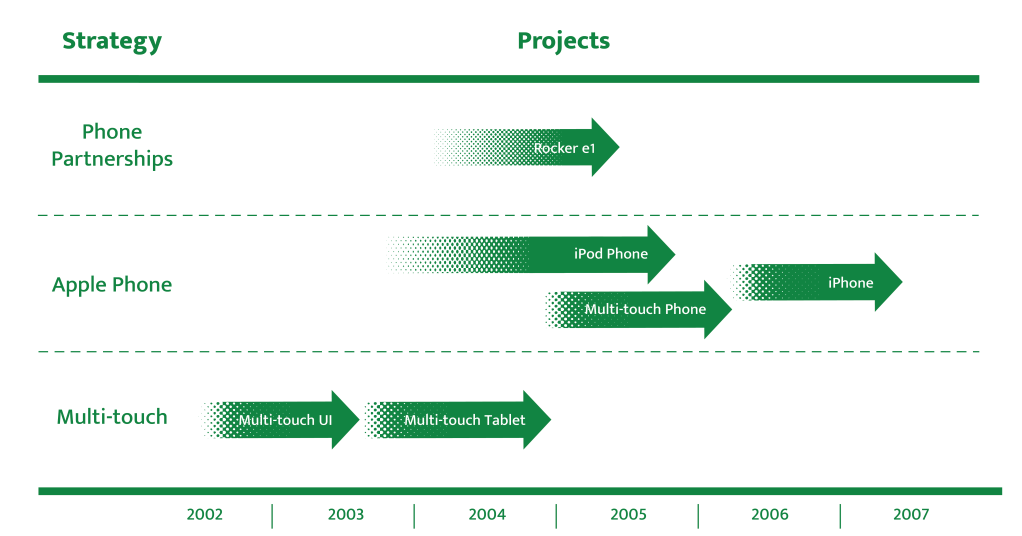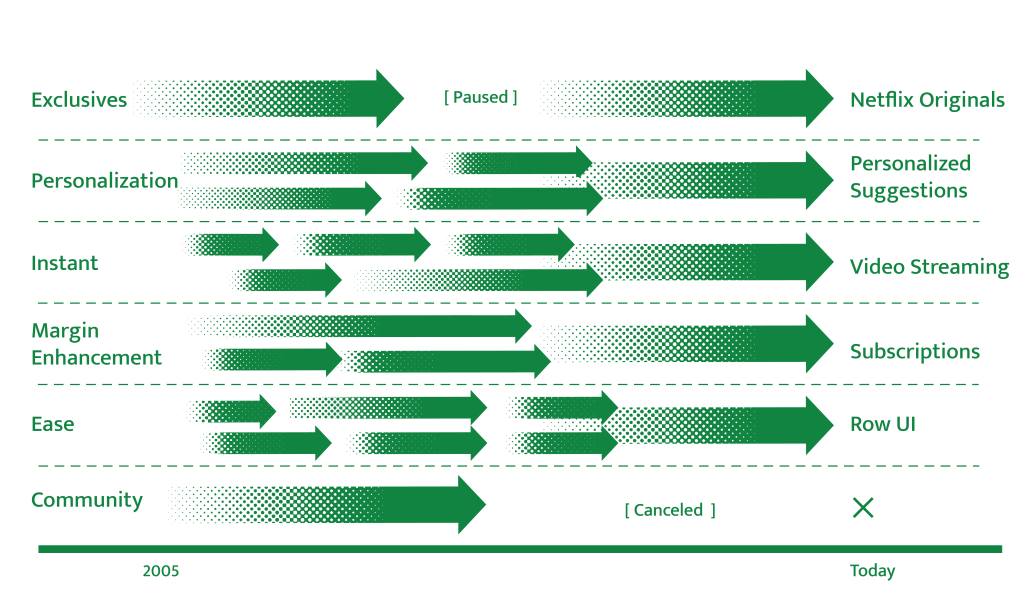A product strategy is a set of decisions and choices that individuals and teams have to make in order to achieve their product vision and mission. That product vision, in turn, should help achieve an aspect of the business strategy. While a business strategy should detail how the organization will succeed, a product strategy should describe how a product will succeed. Products should exist to create value for the customer and business. Ensuring that the product vision, mission, and strategy are derived from the business strategy is a great way to see whether the product is contributing to the organization’s vision. A business strategy is the primary input for a product strategy, alongside the product vision and mission.

Let’s take the example of a ride-sharing company. A part of the business strategy could include focusing on acquiring high-growth startups in the markets where your organization currently doesn’t operate. This is in contrast to a business strategy that could aim to go into the top three markets where your main competitor operates (and you don’t) to try and shrink their potential market size there. A product strategy for the latter could be to target the traffic-dense neighborhoods of the capital cities in the market and win in the cost leadership aspect of the product. Having this context will allow product teams to develop goals around topics like cheaper rides, bigger margins, and higher customer engagement.
Between the business and product strategy layers, some would emphasize the need for a portfolio strategy, which is focused on a specific group of products that the organization is creating. This could be useful in large organizations that have multiple product portfolios for different areas of the organization. To learn more about managing a product portfolio, I recommend starting with Roman Pichler‘s use of the portfolio matrix. For the sake of simplicity, this article describes product strategy in terms of a single product.

Every good product strategy covers the following areas:
- Customer and market needs
- Who are your target customers and users?
- What direct or indirect distribution channels will you use to reach them?
- What is the main problem your product solves?
- Unique selling point
- Aspects of the product that help solve the main user problem.
- Things that help the product stand out from others in the market.
- It is not a mini-backlog/wishlist.
- Business goals
- How does your product drive the business strategy forward?
- Why the organization should invest in it.
- Helps in defining KPIs and measuring performance.
Roger Martin succinctly describes why “strategic planning” is an oxymoron. I have worked with a lot of managers who can’t differentiate between the two. While a strategy is a hypothesis of sorts that the customers in the market will prove/disprove, a plan, in contrast, is a list of activities. Executive management will often make or request a plan, to give themselves a false sense of control and comfort. A great strategy is one that initially no one can prove will succeed. Roger argues that it should make you uncomfortable.
Just as you should explore different business models for the main business strategy, if you have enough resources, your product strategy should consist of exploring different ways of effectively achieving your product mission. My colleague Itamar Gilad refers to them as Multiple Strategic Tracks (MuST). The MuST approach speeds up and increases the likelihood of coming up with the next big thing and greatly reduces the risk of relying on a few big bets. The statistician and author, Nassim Taleb, says “A strategy with optionality is like a highway with multiple exits”.

When a certain strategy is invalidated as a result of the low-fidelity experiments in a track or swimlane, that strategy or model is sunset. This allows the organization to save time and money by reallocating the team to test out other strategies or build a validated strategy into a higher-fidelity strategy with potentially different sub-products. Check out the image below of how Netflix used the same approach and sunset certain initiatives (remember Netflix Party?) while prioritizing others.

In practice, one of my learnings with a MuST approach has been to define between two and four strategic tracks to focus on at a time. The eventual number of course depends on your company’s product complexity, headcount, and vision. The idea of limiting the number of strategic tracks is to bring focus without putting all your eggs into one basket. Once you have a clear idea of your tracks and possible goals per track, it’s crucial to constantly and unsparingly prioritize initiatives within the strategic tracks. Product leaders in the organization need to coach their teams to measure progress toward the goals of each track frequently and transparently, while pragmatically pulling the plug on certain initiatives and building other pieces of the product to a higher level of fidelity. Without constant prioritization, abandonment of certain initiatives, and generation of new initiatives based on internal and external signals, teams and individuals will feel overwhelmed by the different possibilities and lose focus on what matters the most.
When creating a product strategy, it can be extremely helpful to also define strategy levers (indicators) and inflection points for making decisions that alter your strategy in one way or another. What sorts of signals will indicate whether your strategy is working or not? Simplicity is key to communicating the strategy, coming up with appropriate indicators, and proving/disproving it. As customer, market, and competition trends shift, your business and product strategies must evolve with them to remain relevant. Roger points out, “The key is to ask what competitors are seeing, not obsess about what they are doing. Focusing on what they are doing will lead to convergence which is bad for all. Focusing on what they are seeing will spur you to ask better questions and get new and valuable insights faster.”
When your product strategy provides evidence that your business strategy may not be as effective in achieving the organization’s vision and mission, the executive and middle management levels need to verify that and make the appropriate adjustments. A good frequency for reviewing your product strategy is every 3 months, and the business strategy every 6 months.
When reviewing your product strategy with the executive management team, check for the following:
- What do the learnings about the current product strategy tell you about the business strategy? Does the business strategy need to be adjusted? Why or why not?
- What do your findings reveal about your product strategy? Is it still within the constraints of the business strategy?
- If your speed of validating the product strategy is too slow, how will you know? If there too many tracks or initiatives in progress, which ones can be paused, canceled, or sunset?
Having a simple and effective product strategy is key to empowering departments and teams to come up with the appropriate measurable goals, which can be translated into daily activities (projects, tasks, etc). The next blog post will look into the topic of measurable goals.


3 thoughts on “Product strategy”